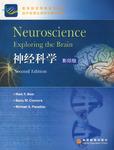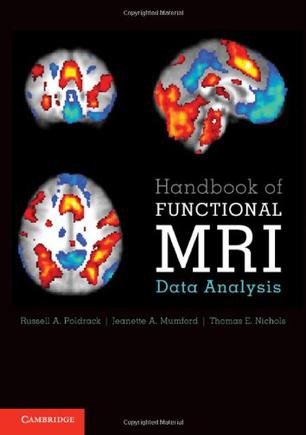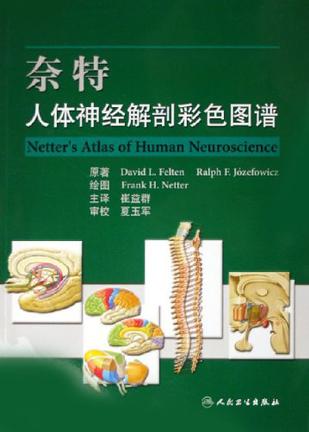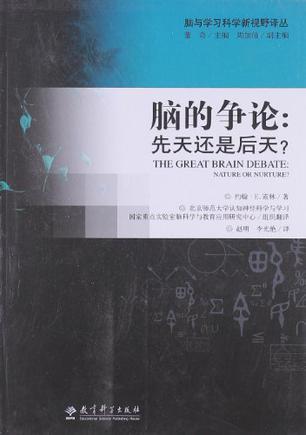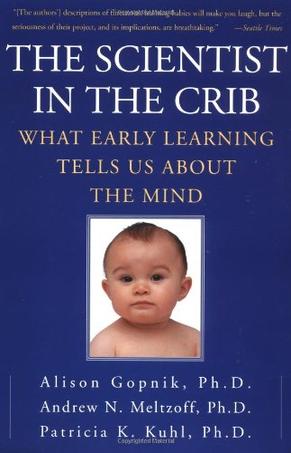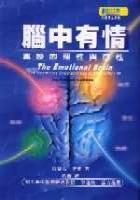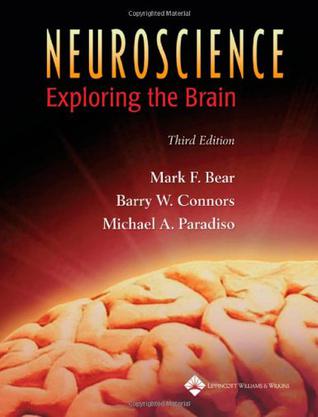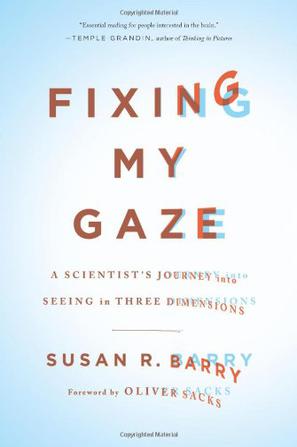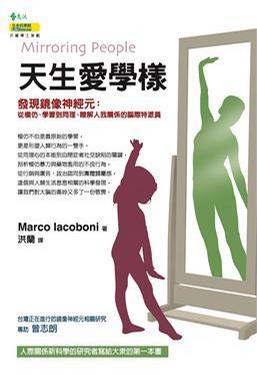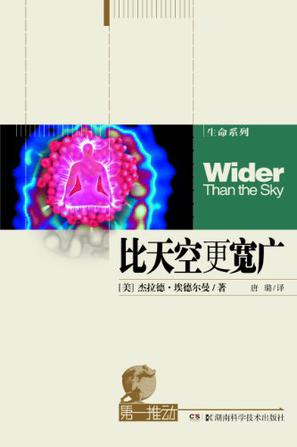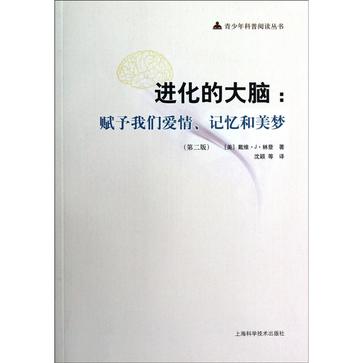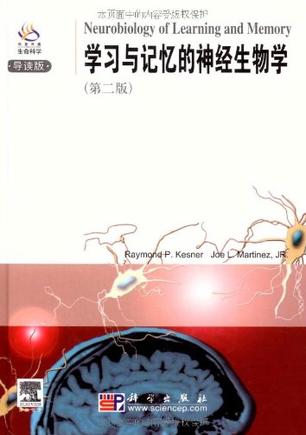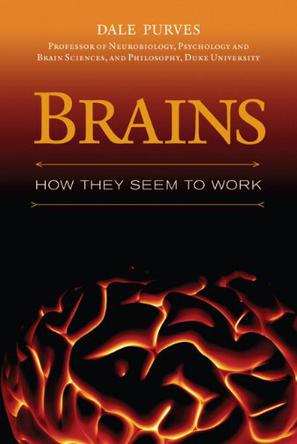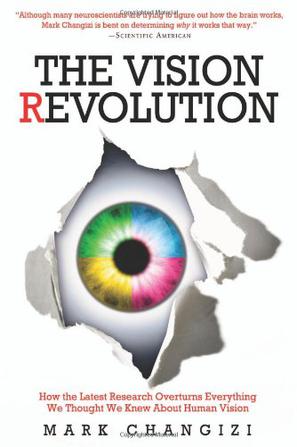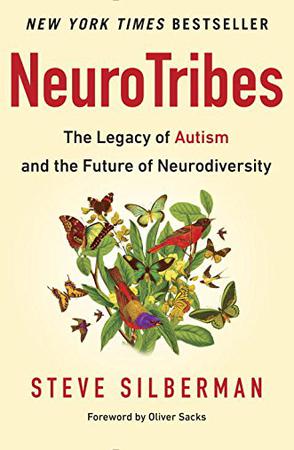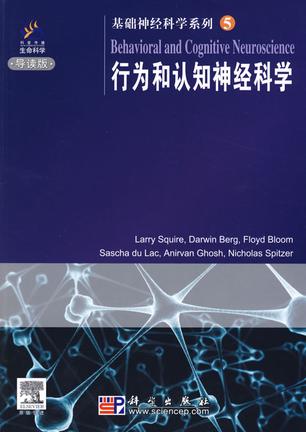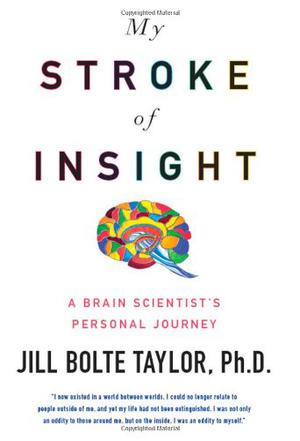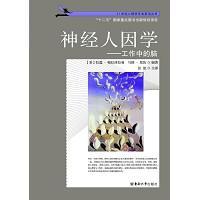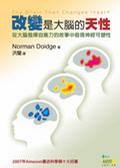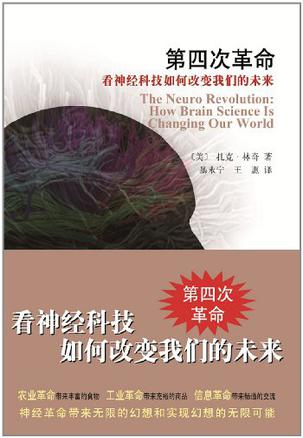欢迎来到相识电子书!
标签:神经科学
-
神经科学
神经科学:英文版,ISBN:9787040112016,作者:美Mark F.Bear等著 -
Handbook of Functional MRI Data Analysis
Functional magnetic resonance imaging (fMRI) has become the most popular method for imaging brain function. Handbook of Functional MRI Data Analysis provides a comprehensive and practical introduction to the methods used for fMRI data analysis. Using minimal jargon, this book explains the concepts behind processing fMRI data, focusing on the techniques that are most commonly used in the field. This book provides background about the methods employed by common data analysis packages including FSL, SPM and AFNI. Some of the newest cutting-edge techniques, including pattern classification analysis, connectivity modeling and resting state network analysis, are also discussed. Readers of this book, whether newcomers to the field or experienced researchers, will obtain a deep and effective knowledge of how to employ fMRI analysis to ask scientific questions and become more sophisticated users of fMRI analysis software. -
奈特人体神经解剖彩色图谱
《奈特人体神经解剖彩色图谱》不仅涵盖Frank H.Netter博士所有原创的局部神经解剖学和系统神经解剖学丰富而精美的绘图,而且介绍了目前对人类大脑、脊髓和周围神经系统许多区域的日益深入的研究。《奈特人体神经解剖彩色图谱》还通过CT、MRI的方法对脊髓和脑干作了横切、矢状与冠状扫描,并对照插图进行重点学习。与这些区域相关的详细文字描述可参阅有关神经解剖学教科书。我们用简明清晰的图标和文字介绍每张插图的主要部分和要点,特别为临床医师提供了在诊治神经科病人时所涉及的与临床相关的基础部分。通过这些精美插图并结合简洁的图标与文字描述,《奈特人体神经解剖彩色图谱》展示了局部和系统神经系统的基本成分、组成和功能。 -
脑的争论
《脑的争论:先天还是后天?》分别从脑的发育、成熟和老化三个不同时期,对脑研究的进展情况进行了详细的阐述。先天的遗传对脑的发育起着决定性的作用,那么是否可以说环境等非遗传因素在脑的早期发育中只是扮演着无足轻重的角色呢?我们是怎样产生和维持记忆的?神经元的可塑性是如何形成的?儿童的脑为什么比成人的脑的可塑性更强,成人的脑中的神经元能否再生?基因与行为之间的错综复杂的关系是否有定论?脑的老化过程中会出现哪些疾病?《脑的争论:先天还是后天?》就以上问题展开论述,对已知的事实和存在的争论进行阐述与评论,给读者带来新知与启迪。“先天存在”还是“后天培养”这一主题贯穿始末,也体现了遗传、环境与行为三者之间错综复杂的关系。神经生物学的进展为学习科学的研究奠定了坚实的基础,它能够帮助我们更深刻地理解人脑,从而更好地推动学习科学领域的发展。 -
The Scientist in the Crib
This exciting book by three pioneers in the new field of cognitive science discusses important discoveries about how much babies and young children know and learn, and how much parents naturally teach them.It argues that evolution designed us both to teach and learn, and that the drive to learn is our most important instinct. It also reveals as fascinating insights about our adult capacities and how even young children -- as well as adults -- use some of the same methods that allow scientists to learn so much about the world. Filled with surprise at every turn, this vivid, lucid, and often funny book gives us a new view of the inner life of children and the mysteries of the mind. -
腦中有情
每個人都有情緒,它是生活中無法缺席的要角; 情緒是那種你知道它是什麼,卻不知該如何下定義的東西;如果我們連情緒是什麼都不知道,又怎能找出大腦對它運作之謎。科學家對情緒的看法眾說紛紜,有人認為是身體的反應,有人說是大腦對身體反應的狀態,更有人認為身體的反應對情緒來說並不那麼重要....如果情緒能有個科學的解釋,會是件功德無量之事,它會讓我們了解心智是如何運作的,以及一旦生活層面的瓦解會造成的結果。不過,科學家至今仍無法解釋情緒為何物? 本書並非在探討情緒心理層面與大腦功能間的應對關係,而是研究大腦如何從一個新的觀點來了解情緒,並藉由神經系統的內部去了解這些令人困惑的心智狀態。 -
Neuroscience
Widely praised for its student-friendly style and exceptional artwork and pedagogy, Neuroscience: Exploring the Brain is a leading undergraduate textbook on the biology of the brain and the systems that underlie behavior. This edition provides increased coverage of taste and smell, circadian rhythms, brain development, and developmental disorders and includes new information on molecular mechanisms and functional brain imaging. Path of Discovery boxes, written by leading researchers, highlight major current discoveries. In addition, readers will be able to assess their knowledge of neuroanatomy with the Illustrated Guide to Human Neuroanatomy, which includes a perforated self-testing workbook. This edition's robust ancillary package includes a bound-in student CD-ROM, an Instructor's Resource CD-ROM, a Connection Website, and LiveAdvise: Neuroscience online student tutoring. -
Fixing My Gaze
When neuroscientist Susan Barry was fifty years old, she took an unforgettable trip to Manhattan. As she emerged from the dim light of the subway into the sunshine, she saw a view of the city that she had witnessed many times in the past but now saw in an astonishingly new way. Skyscrapers on street corners appeared to loom out toward her like the bows of giant ships. Tree branches projected upward and outward, enclosing and commanding palpable volumes of space. Leaves created intricate mosaics in 3D. With each glance, she experienced the deliriously novel sense of immersion in a three dimensional world. Barry had been cross-eyed and stereoblind since early infancy. After half a century of perceiving her surroundings as flat and compressed, on that day she was seeing Manhattan in stereo depth for first time in her life. As a neuroscientist, she understood just how extraordinary this transformation was, not only for herself but for the scientific understanding of the human brain. Scientists have long believed that the brain is malleable only during a “critical period” in early childhood. According to this theory, Barry’s brain had organized itself when she was a baby to avoid double vision – and there was no way to rewire it as an adult. But Barry found an optometrist who prescribed a little-known program of vision therapy; after intensive training, Barry was ultimately able to accomplish what other scientists and even she herself had once considered impossible. A revelatory account of the brain’s capacity for change, Fixing My Gaze describes Barry’s remarkable journey and celebrates the joyous pleasure of our senses. -
天生愛學樣
模仿不但是最原始的學習, 更是形塑人類行為的一雙手。 從同理心的本能到自閉症者社交缺陷的關鍵, 剖析模仿暴力與藥物濫用的不良行為, 從行銷與廣告、政治認同到團體歸屬感, 這個與人類生活息息相關的科學發現, 讓我們對大腦的奧妙又多了一份敬畏。 你聽過「神經行銷學」、「神經經濟學」或「神經政治學」嗎?不久的將來這些將會變成熱門研究。 一九八○年代末,義大利的一個神經生理研究團隊在獼猴的大腦中,意外發現一種特別的神經元,進而在人類大腦中也發現同樣的神經元,為神經科學帶來石破天驚的影響。它有個恰如其份的名字:鏡像神經元(mirror neurons)。 鏡像神經元的發現有多重要?有學者認為,就像DNA的發現對生物學的影響一樣。 有了大腦中這無數面的鏡子,科學家對這個人體最神祕的主宰從此「腦界大開」。原來,被奉為圭臬數十年的理論──皮亞傑的「嬰兒是透過學習才會模仿」──有誤,如今的實驗證據顯示恰恰相反:嬰兒是透過模仿來學習的。 經由一個又一個的實驗,本身即為重要研究者之一的作者,帶領我們飽覽一趟鏡像神經元發現之旅:有出人意表的靈光一閃、創意十足的研究蹊徑,也有看似平淡無奇、實則巧妙無比的實驗手法;有規規矩矩的科學實驗,也有社會活動的研究應用--例如行銷與政治。「人是社會的動物」這句話,竟然可以從鏡像神經元的研究得到充分的支持。 原來模仿竟然如此重要,它不但是最原始的學習,更是形塑人類行為的一雙手。看到別人笑時,鏡像神經元讓我們不由自主的微笑起來;透過觀察到的面部表情,鏡像神經元提供我們一個內在的模仿,幫助我們在第一時間察知別人表情和情緒的改變;鏡像神經元幫助我們的大腦知曉別人的意圖,讓我們瞭解別人的心智狀態;透過這種鏡像式的模仿,我們可以跟別人分享情緒、經驗、需求和目標──模仿和鏡像神經元加速了自己和他人的親密關係。 大腦派出鏡像神經元這個特派員,來瞭解我們自己存在的情況並處理我們與別人的關係。人我是「一枚銅板的兩面」:沒有他人,何來自我。透過模仿,我們瞭解別人,進而瞭解自己。這種感同身受的同理心,正是社會行為最基本的起始點。 沒有人是孤島,人類是生物上先天設定、演化上設計好要跟別人深深相互聯結在一起的──鏡像神經元向我們證明了這一點。 -
比天空更宽广
《比天空更宽广》是诺贝尔奖得主、神经科学家埃德尔曼在《比天空更宽广》中阐释了关于大脑以及心身关联最前沿的研究成果。埃德尔曼博士讨论了科学和医学的最新进展,探索了意识与因果、进化、自我发展的关系,以及感觉、学习和记忆的起源问题。 -
进化的大脑
《进化的大脑——赋予我们爱情、记忆和美梦(第2版)》是美国约翰·霍普金斯大学医学院神经科学系教授戴维·J·林登博士向公众普及脑科学知识的富于趣味性的读物。作者认为人脑是在长期进化过程中自然形成的组织系统而不是刻意设计的产物,因此将脑比作可以叠加新成分的甜筒冰淇淋。以这一思路为主线,作者介绍了大脑的构成和基本发育、感觉和感情等,进而描述脑如何支配学习、记忆和个性,如何决定性行为和性倾向,以及脑在睡眠和梦中的活动机制,还尝试性地阐述了脑功能与宗教的关系。《进化的大脑——赋予我们爱情、记忆和美梦(第2版)》中穿插了不少趣事并有近50幅插图。 -
学习与记忆的神经生物学
《学习与记忆的神经生物学(第2版)(导读版)》从多个层面介绍了对学习与记忆的研究,包括各个脑区的作用、记忆功能的调节系统,以及如何依靠研究结果解释实际问题等。涵盖了有关人类、猴子和家鼠的最新研究,讨论了不同系统之间的互作与相互影响,及通过何种手段和技术研究学习与记忆中的神经生物学。 《学习与记忆的神经生物学(第2版)(导读版)》分为三部分。第一部分包括个体发育与遗传对记忆的影响,特定基因在学习与记忆的形成、存储及提取中的功能。还覆盖了记忆的可塑性、细胞改变的电生理学、海马位置细胞与相关神经环路在学习与记忆中的功能、利用神经计算模型研究记忆加工过程、激素内分泌过程对学习与记忆的影响。第二部分讨论了神经系统在调节学习与记忆中的作用,这些章节包括内侧颞叶、额叶、杏仁核、基底神经节和小脑等脑区,对这些脑区的研究采用多种研究途径和技术手段,包括神经解剖、电生理学、损毁、药理学、功能磁共振成像、行为和认知分析技术。第三部分重点介绍了如何把前述研究的结果应用于现实生活中的实际问题。这些问题涉及奖赏与药物滥用、老龄化对记忆的影响、提升记忆的机制、以及从分子水平和治疗角度研究神经退行性疾病的重要性。 -
Brains
For 50 years, the world's most brilliant neuroscientists have struggled to understand how human brains really work. Today, says Dale Purves, the dominant research agenda may have taken us as far as it can--and neuroscientists may be approaching a paradigm shift. In this highly personal book, Purves reveals how we got to this point and offers his notion of where neuroscience may be headed next. Purves guides you through a half-century of the most influential ideas in neuroscience and introduces the extraordinary scientists and physicians who created and tested them. Purves offers a critical assessment of the paths that neuroscience research has taken, their successes and their limitations, and then introduces an alternative approach for thinking about brains. Building on new research on visual perception, he shows why common ideas about brain networks can't be right and uncovers the factors that determine our subjective experience. The resulting insights offer a deeper understanding of what it means to be human. * Why we need a better conception of what brains are trying to do and how they do it Approaches to understanding the brain over the past several decades may be at an impasse * The surprising lessons that can be learned from what we see How complex neural processes owe more to trial-and-error experience than to logical principles * Brains--and the people who think about them Meet some of the extraordinary individuals who've shaped neuroscience * The "ghost in the machine" problem The ideas presented further undermine the concept of free will -
The Vision Revolution
Primates evolved binocular vision (both eyes facing forward) so that they can see in three dimensions, critical as they jumped from branch to branch. Higher primates developed color vision to better hunt out ripe fruit. Optical illusions succeed because they exploit the limitations of our visual processing. Wrong! All of these beliefs are false, as groundbreaking research by evolutionary scientist and neurobiologist Mark Changizi now reveals. Changizi's research centers on the "why" of human vision. Why do we have binocular vision? Why do we see in color the way we do? Why do optical illusions work? And why are we able to absorb information by reading―a very new invention from an evolutionary perspective―more readily than by hearing, which we've evolved to do over hundreds of thousands of years? The Vision Revolution answers these questions, and proves, with the detailed results of Changizi's fieldwork, that the answers are very different than traditionally believed. A radically new perspective of human vision is now emerging. The Vision Revolution is upon us. -
行为和认知神经科学
本书特色: 内容全面——全书共分7个部分,覆盖神经科学领域的各个方面,第三版增加了神经科学发展较快的领域,如树突的发育、化学感觉、小脑、眼动、睡眠和梦,以及意识等。 作者专业——本书由多位美国科学院院士参与,其中两位曾经担任过神经科学学会(Society for Neuroscience)的主席,由100多位神经科学家共同编著而成。 生动详实——全书包含530余幅图例和照片,便于读者理解,本书附赠光盘包含全书所有彩图。 结构新颖——为了使读者能够更好地理解文中内容和开阔视野,书内增加了大量背景性材料,于正文中用方框标出,包括重要的实验、病例、实验方法和概念等。每章末尾介绍一些有关文献和进一步阅读的补充材料,供读者学习和深入钻研。 ------- 目录 第七部分 行为和认知神经科学 第44章 人脑进化 第45章 认知发育和衰老 第46章 物体的视觉感知 第47章 空间识别 第48章 注意 第49章 学习与记忆:基础机制 第50章 学习与记忆:脑系统 第51章 语言和交流 第52章 前额叶皮层及脑功能执行 第53章 意识的神经科学 -
My Stroke of Insight
在线阅读本书 A brain scientist's journey from a debilitating stroke to full recovery becomes an inspiring exploration of human consciousness and its possibilities On the morning of December 10, 1996, Jill Bolte Taylor, a thirty-seven-year-old Harvard-trained brain scientist, experienced a massive stroke when a blood vessel exploded in the left side of her brain. A neuroanatomist by profession, she observed her own mind completely deteriorate to the point that she could not walk, talk, read, write, or recall any of her life, all within the space of four brief hours. As the damaged left side of her brain--the rational, grounded, detail- and time-oriented side--swung in and out of function, Taylor alternated between two distinct and opposite realties: the euphoric nirvana of the intuitive and kinesthetic right brain, in which she felt a sense of complete well-being and peace; and the logical, sequential left brain, which recognized Jill was having a stroke, and enabled her to seek help before she was lost completely. In My Stroke of Insight , Taylor shares her unique perspective on the brain and its capacity for recovery, and the sense of omniscient understanding she gained from this unusual and inspiring voyage out of the abyss of a wounded brain. It would take eight years for Taylor to heal completely. Because of her knowledge of how the brain works, her respect for the cells composing her human form, and most of all an amazing mother, Taylor completely repaired her mind and recalibrated her understanding of the world according to the insights gained from her right brain that morning of December 10th. Today Taylor is convinced that the stroke was the best thing that could have happened to her. It has taught her that the feeling of nirvana is never more than a mere thought away. By stepping to the right of our left brains , we can all uncover the feelings of well-being and peace that are so often sidelined by our own brain chatter. A fascinating journey into the mechanics of the human mind, My Stroke of Insight is both a valuable recovery guide for anyone touched by a brain injury, and an emotionally stirring testimony that deep internal peace truly is accessible to anyone, at any time. Questions for Jill Bolte Taylor Amazon.com: Your first reaction when you realized what was happening to your body was one you would expect: "Oh my gosh, I'm having a stroke!" Your second, though, was a little more surprising: "Wow, this is so cool!" What could be cool about a stroke? Taylor: I grew up to study the brain because I have a brother who is only 18 months older than I am. He was very different in the way he perceived experiences and then chose to behave. As a result, I became fascinated with the human brain and how it creates our perception of reality. He was eventually diagnosed with the brain disorder schizophrenia, and I dedicated my career to the postmortem investigation of the human brain in an attempt to understand, at a biological level, what are the differences between my brain and my brothers brain. On the morning of the stroke, I realized that my brain was no longer functioning like a "normal" brain and this insight into my brother's reality excited me. I was fascinated to intimately understand what it might be like on the inside for someone who would not be diagnosed as normal. Through the eyes of a curious scientist, this was an absolutely rare and fascinating experience for me to witness the breakdown of my own mind. Amazon.com: What did you learn about the brain from your stroke and your recovery that your scientific training hadn't prepared you for? Taylor: My scientific training did not teach me anything about the human spirit and the value of compassion. I had been trained as a scientist, not as a clinician. I can only hope that we are teaching our future physicians about compassion in medicine, and I know that some medical schools, including the Indiana University School of Medicine, have created a curriculum with this intention. My training as a scientist, however, did provide me with a roadmap to how the body and brain work. And although I lost my left cognitive mind that thinks in language, I retained my right hemisphere that thinks in pictures. As a result, although I could not communicate with the external world, I had an intuitive understanding about what I needed to do in order to create an environment in which the cells in my brain could be happy and healthy enough that they could regain their function. In addition, because of my training, I had an innate trust in the ability of my brain to be able to recover itself and my mother and I respected the organ by listening to it. For example, when I was tired, I allowed my brain to sleep, and when I was fresh and capable of focusing my attention, we gave me age-appropriate toys and tools with which to work. Amazon.com: Your stroke affected functions in your left brain, leaving you to what you call the "la-la land" of your right hemisphere. What was it like to live in your right brain, and then to rebuild your left? Taylor: When the cells in my left brain became nonfunctional because they were swimming in a pool of blood, they lost their ability to inhibit the cells in my right hemisphere. In my right brain, I shifted into the consciousness of the present moment. I was in the right here, right now awareness, with no memories of my past and no perception of the future. The beauty of La-la land (my right hemisphere experience of the present moment) was that everything was an explosion of magnificent stimulation and I dwelled in a space of euphoria. This is great way to exist if you don't have to communicate with the external world or care whether or not you have the capacity to learn. I found that in order for me to be able to learn anything, however, I had to take information from the last moment and apply it to the present moment. When my left hemisphere was completely nonfunctional early on, it was impossible for me to learn, which was okay with me, but I am sure it was frustrating for those around me. A simple example of this was trying to put on my shoes and socks. I eventually became physically capable of putting my shoes and socks on, but I had no ability to understand why I would have to put my socks on before my shoes. To me they were simply independent actions that were not related and I did not have the cognitive ability to figure out the appropriate sequencing of the events. Over time, I regained the ability to weave moments back together to create an expanse of time, and with this ability came the ability to learn methodically again. Life in La-la land will always be just a thought away, but I am truly grateful for the ability to think with linearity once again. Amazon.com: What can we learn about our brains and ourselves from your experience, even if we haven't lived through the kind of brain trauma you have? Taylor: I learned that I have much more say about what goes on between my ears than I was ever taught and I believe that this is true for all of us. I used to understand that I had the ability to stop thinking about one thing by consciously choosing to preoccupy my mind with thinking about something else. But I had no idea that it only took 90 seconds for me to have an emotional circuit triggered, flush a physiological response through my body and then flush completely out of me. We can all learn that we can take full responsibility for what thoughts we are thinking and what emotional circuitry we are feeling. Knowing this and acting on this can lead us into feeling a wonderful sense of well-being and peacefulness. Amazon.com: You are the "Singin' Scientist" for Harvard's Brain Bank (just as you were before your stroke). Could you tell us about the Brain Bank (in song or not)? Taylor: There is a long-term shortage of brain tissue donated for research into the severe mental illnesses. Most people dont realize that when you sign the back of your license as an organ donor, the brain is not included. If you would like to donate your brain for research, you must contact a brain bank directly. There is also a shortage of "normal control" tissue for research. The bottom line reality is that if there were more tissue available for research, then more scientists would be dedicating their careers to the study of the severe mental illnesses and we would have more answers about what is going on with these disorders. The numbers of mentally ill individuals in our society are staggering. The most serious and disabling conditions affect about 6 percent--or one in 17--adults and 9-13 percent of children in the United States. Half of all lifetime conditions of mental illness start by age 14 years, and three-fourths by age 24 years. For more information about brain donation to the Harvard brain bank, please call 1-800-BRAINBANK or visit them at: www.brainbank.mclean.org If you would like to hear me sing the brain bank jingle, please visit www.drjilltaylor.com! -
神经人因学
作为一个新兴领域,神经人因学的研究正处于蓬勃发展中。本书首次将已有成果整合在一起,力图展示对人类脑功能的理解如何给人因学以启发,从而设计安全、有效、愉悦的工作场景。《神经人因学:工作中的脑》展示了神经人因学如何基于现代神经科学和人因心理学与工程学,突破标准的实验室研究,走到自然或仿自然情境中,帮助我们理解日常生活中各种复杂任务下的脑功能和行为。 本书开篇纵览了神经人因学的主要研究问题,最后一章展望了这一交叉学科的未来发展方向。中间22个章节中的每一章都探讨一个特定主题,涵盖了脑与行为研究中大量难题的科学和临床解决途径,这些问题吸引着研究者们去探索和寻求答案。神经人因学的整合需要医学、人因工程学、生理学、心理学、脑成像、公共卫生以及法律专家们集体智慧的参与,问题的解答更是需要众多相关领域的专家们共享知识、交流思想、团结协作,我们希望本书能为此略尽绵薄之力。 -
改變是大腦的天性
大腦:一個活的有機體,可以改變它自己的結構與功能,即使再老再殘缺都可以。 發現神經可塑性是神經科學至今最重大的突破,它推翻了數百年來認為「成年大腦不可改變」的看法;不但給心智有缺陷的人帶來希望,也提供大腦傷害的治療復原機會。 一個一直跌倒的婦女……如何被一個發現我們的感官有可塑性的人所救 自己建構一個更好的大腦──被貼上「智障」標籤的女人如何自我療癒 重新設計大腦──科學家改變了大腦,使它能有更敏銳的視知覺、更好的記憶、快速的思考以及治癒學習障礙 學習味覺和愛──大腦的可塑性教導我們關於性吸引力和愛 午夜的復活──中風的病人學習如何再行動與說話 大腦的鎖打開了──用大腦的可塑性去停止憂慮、偏執與強迫性行為和壞習慣 疼痛──可塑性的黑暗面 想像力──思想如何造就想像力 把我們的鬼魂變成祖先──心理分析是神經可塑性的療法 返老還童,重返青春──神經感細胞的發現及如何永保大腦的功能 比部分的總和還多──一個女人讓我們看到大腦可以如何的有可塑性 多吉醫師帶我們進入一個奇妙的世界,透過一個接個的人生故事讓我們看到「大腦可以改變」背後的意義。人腦成長沒有極限因為它彈性一流,透過思想可以開關我們的基因,我們對人的潛能和人性的看法也將徹底被改變。 越來越多的證據顯示,大腦可以透過思想和動作來改變它的結構和功能,所以它的能力其實一直被低估了!本書分享來自腦科學前衛疆域的個人成功案例,從最聰明的科學家與生命被改變的病患兩者身上,書中所有歷經神經可塑性(neuroplasticity)改變的真人真事,既充滿科學性,更具勵志性。 一出生就眼盲的人可以看見東西,天生耳聾的人竟能聽見聲音,只有半個腦的女人可以重新組織她的腦,幾十年前就中風而被判定復原無望的人恢復他原有的能力,有學習障礙的人智商增加學習進步,八十歲的老人記憶力可以恢復到五十歲程度,痛苦的幻肢不見了,腦性麻痺的孩子學會更優雅穩健的走路,憂鬱症和焦慮症消失甚至性格一輩子的改變,有人可以用思想重新設定他們大腦的神經迴路治癒了強迫症和創傷症候群……推而廣之,所有與人性相關的人文、社會科學與物理科學,也都要改觀了! -
第四次革命
农业革命、工业革命、信息革命都给人类社会带来的翻天覆地的变化,那么,人类将经历的第四次革命将是什么?神经革命!在TheNeuroRevolution一书中,作者ZackLynch预言神经革命将再次颠覆人类生活、工作和娱乐。神经科技作为新的技术(如用于探究我们大脑的脑成像技术),正逐渐影响着人类生活的方方面面,包括金融、法律、政治、艺术、战争甚至宗教信仰。通过讲述引领这场神经革命的杰出人才背后的故事,作者向我们展示了这个即将到来的、让人吃惊的未来。这本书带给我们的是惊叹、是讨论,可能还有些许的惊慌失措,但这些都是我们必须要知道的,因为神经革命将改变的是我们每一个人,是整个人类的世界。
热门标签
下载排行榜
- 1 梦的解析:最佳译本
- 2 李鸿章全传
- 3 淡定的智慧
- 4 心理操控术
- 5 哈佛口才课
- 6 俗世奇人
- 7 日瓦戈医生
- 8 笑死你的逻辑学
- 9 历史老师没教过的历史
- 10 1分钟和陌生人成为朋友

